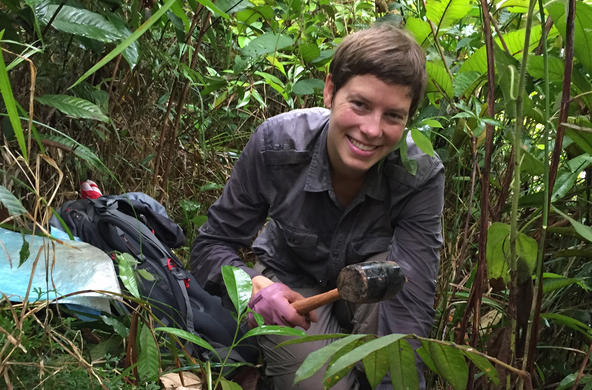- Profile
- Publications
One of the greatest challenges facing ecologists today is to understand how terrestrial ecosystems will offset human carbon emissions and slow climate change. Sarah Batterman's research aims to solve this problem.
Batterman uses large-scale ecosystem experiments, field observations, and modeling to analyze how the biodiversity of tropical tree species, their microbial partners, and nutrients govern tropical rainforest recovery from disturbance, response to environmental change, and future potential as a carbon sink. She is also turning to the past to understand how the evolution of plant symbioses with fungi and nitrogen-fixing bacteria changed the climate over earth's long-term history.
Batterman discovered that symbiotic nitrogen fixation holds a key role during tropical rainforest recovery from disturbance, fertilizing the forests with nitrogen, enhancing tropical rainforest growth, and, ultimately, increasing the size of the carbon sink in recovering forests.
This work will inform policy makers, practitioners, and the general public about the potential for carbon offsets in tropical regions, and how to build better forests to combat climate change.

